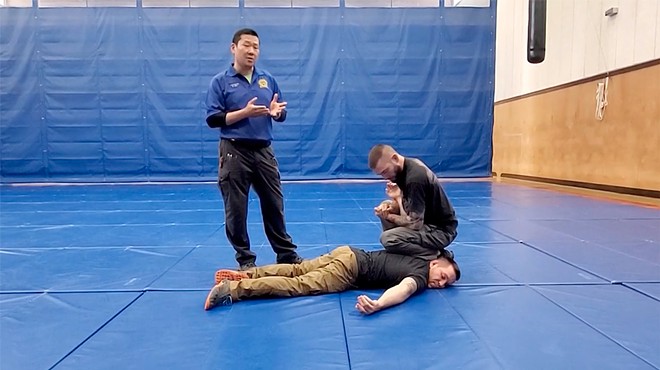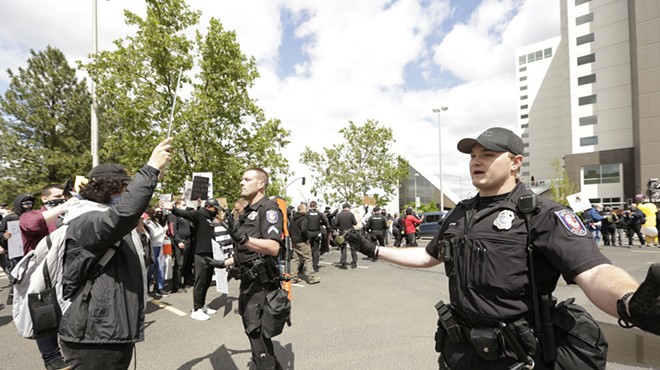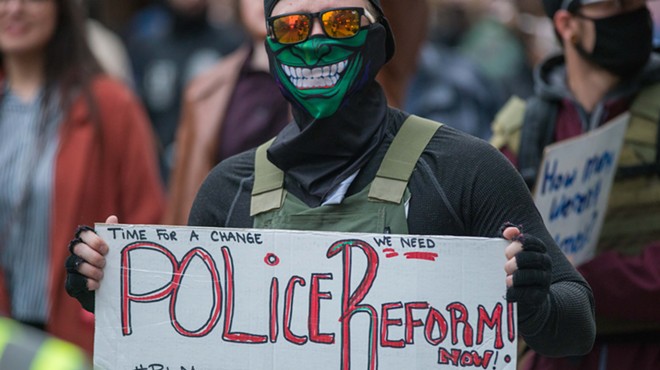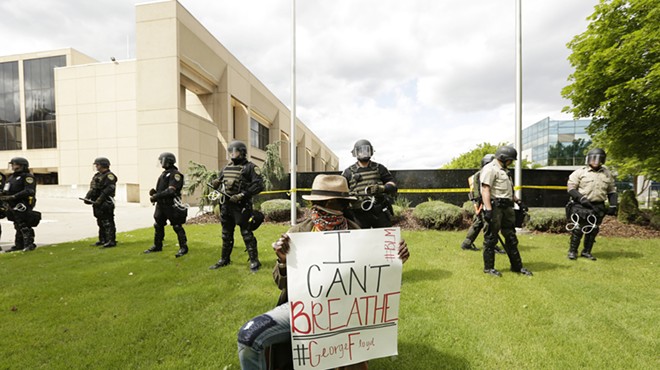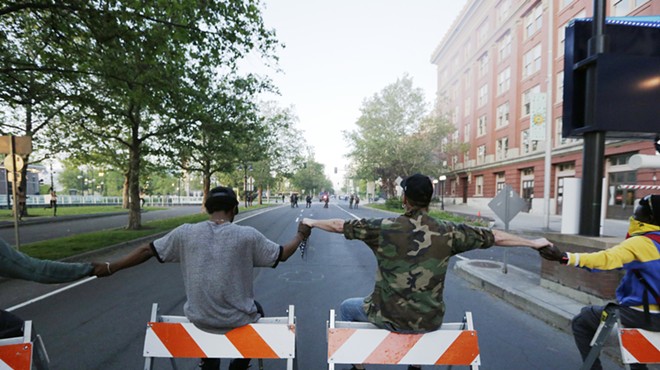
But after the Inlander and other media outlets reported on photos of a Spokane Police officer's knee on the neck of a suspect — an echo of the image showing a Minneapolis Police officer kneeling on the neck of 46-year-old George Floyd, killing him — the Spokane Police Department rushed to get the footage out.
On Thursday, the department released six recordings showing the arrest and showing that Officer Andrew Bjur had his knee on the neck of the homeless suspect, Corey West, for nearly a minute before removing it.
Last week, the Police Department suggested that the Minneapolis Police officer's placement of his knee on Floyd's neck was contrary to the way things were done in Spokane.
In the Spokesman-Review, he stressed that a knee is sometimes briefly placed on the upper back below the neck.
But here, the body camera footage makes it clear that Bjur's knee comes down on the suspect's neck and remains there for a minute.
"Owwww!" West says as he's being handcuffed, elbows skinned up. "Why are you doing it like that? You could have been way more gentle. Please get off my head! Oww! What did I do to you, dammit?"
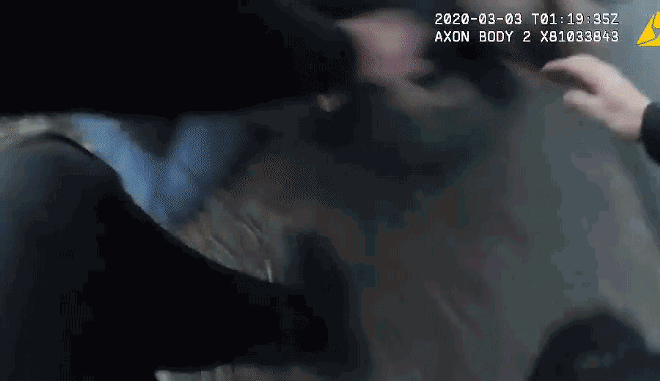
"Goddamnit, I can't breathe," West pleads.
"You're fine," one of the officers says.
"You're still talking, you can breathe," another says.
"Please," West repeats.
"Effective immediately, our trainers will explicitly state in training that placing the knee on a subject’s neck and applying pressure is deadly and should never be done unless the situation clearly warrants the use of deadly force."
tweet this
"Officer, I can't breathe—" he says. "Get off my head!"
"You can breathe just fine," another officer says at the same time. "I'm not blocking anything."
In the body camera footage, witness Eddie Westerman — who took the photos and published her account to Facebook this week — is seen briefly, but her recollection that she yelled at the officers that the suspect couldn't breathe isn't captured on the video.
Having rewatched the footage of the altercation, Westerman stands by her original assessment of the arrest.
"The cops used excessive force to take him down (which I understand since they didn't know the situation) but they continued to use excessive force long after they had him under full control and saw he was unarmed," Westerman writes in an email. "He also said 'I can't breathe' and they told him he could."
It turns out that the Spokane Police Department does train that it's OK to put pressure on the neck of a subject for a short period of time.
In a recent post on their website, the Washington State Criminal Justice Training Commission said that they asked their trainers in control and defensive tactics whether they trained officers explicitly not to place their knee on the back of the subject's neck.
But the commission changed that, stating that "we will no longer assume that students see what is obvious to trainers."
"Effective immediately, our trainers will explicitly state in training that placing the knee on a subject’s neck and applying pressure is deadly and should never be done unless the situation clearly warrants the use of deadly force," the commission continues.
"Effective immediately within SPD defensive tactics training, the application of a knee or shin on the neck is considered an exceptional technique," Humphreys writes. "SPD is in the process of updating its defensive tactics manual and reviewing this technique as well as looking at the Minneapolis incident for lessons learned in an in-service training beginning next week."
An "exceptional technique," says Police Ombudsman Bart Logue, is a rare action that generally isn't taught and can only be justified under specific exceptional circumstances.
The speed with which the Spokane Police Department provided the body camera footage is a dramatic contrast from how long it took the department to release the footage of Officer Dan Lesser shoving a police dog through a car window to attack a surrendering suspect last year. City Council members first demanded to be able to see the footage of the video at the end of May of 2019 — only to be told that they would need to sign nondisclosure agreements and that department policy limited the release of video that was a part of an active investigation. The public only saw the video five months later, at the end of October.
There's an ongoing IA investigation this time too. But this time? It only took a week.




